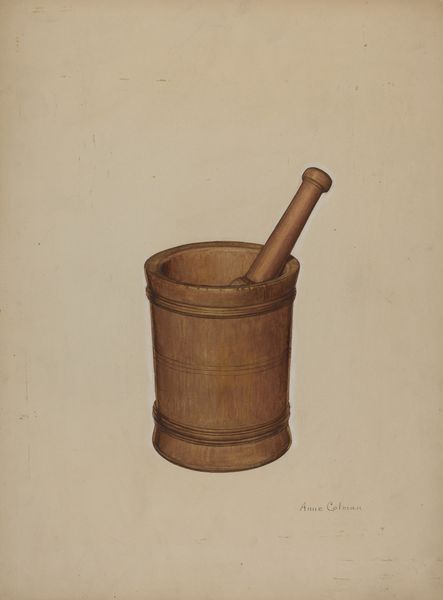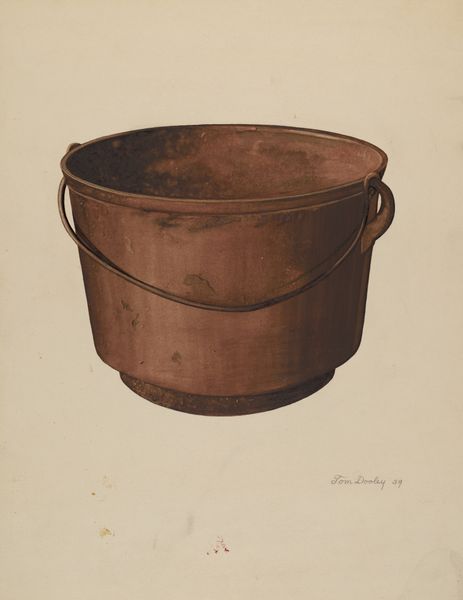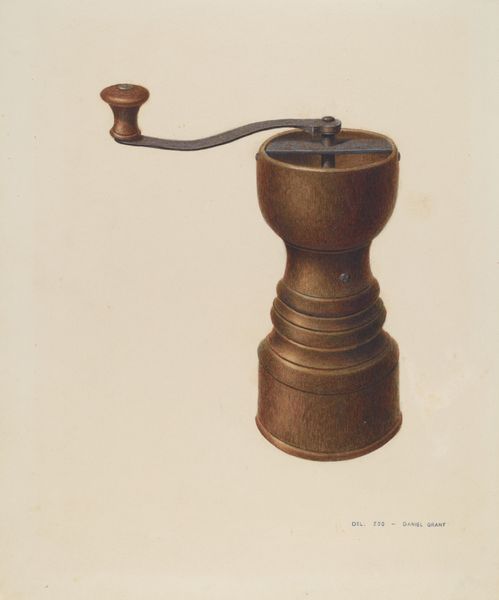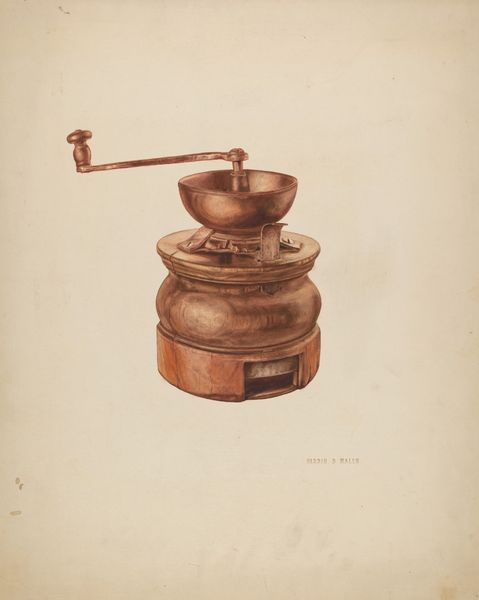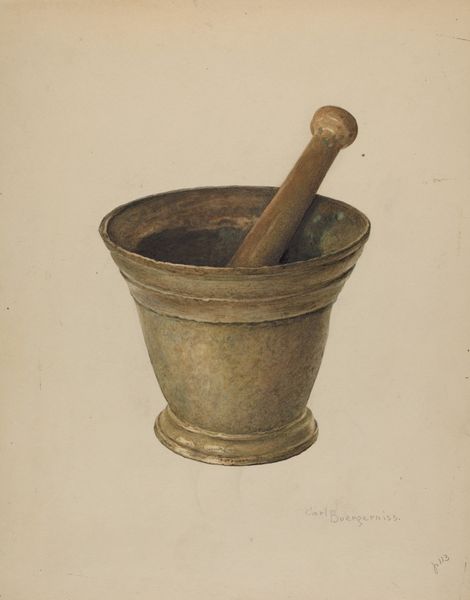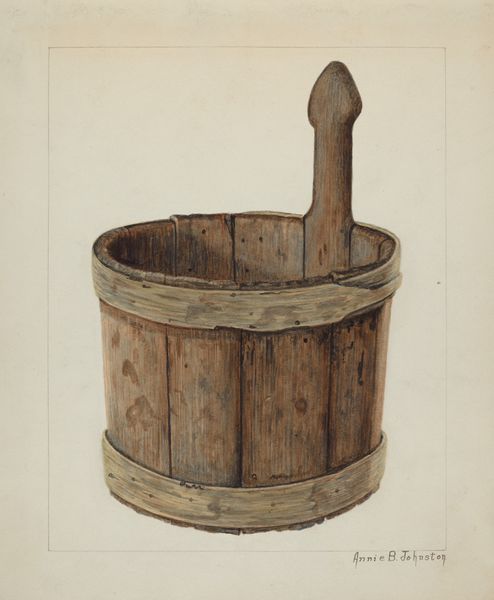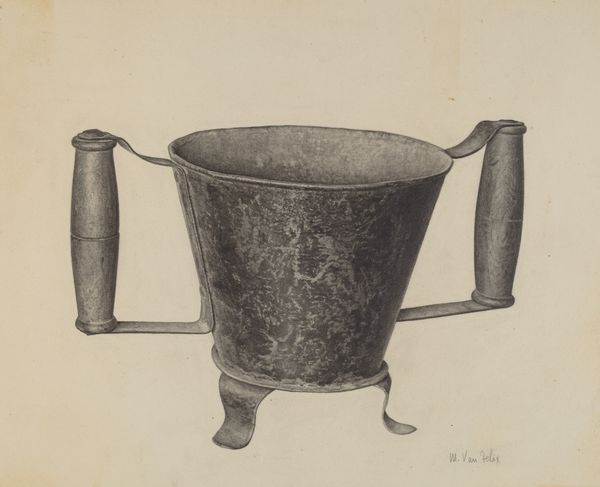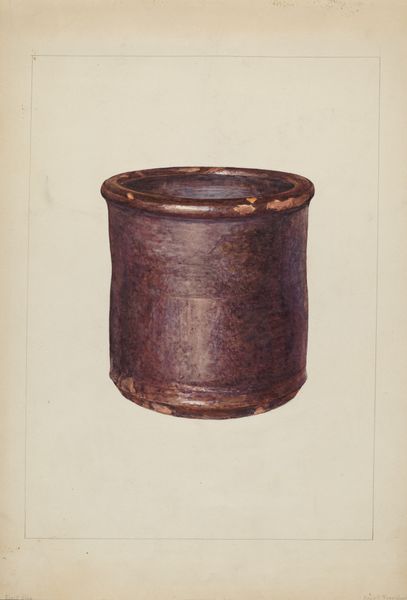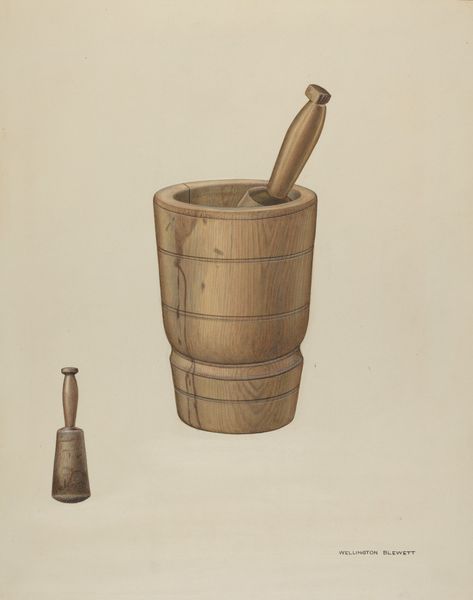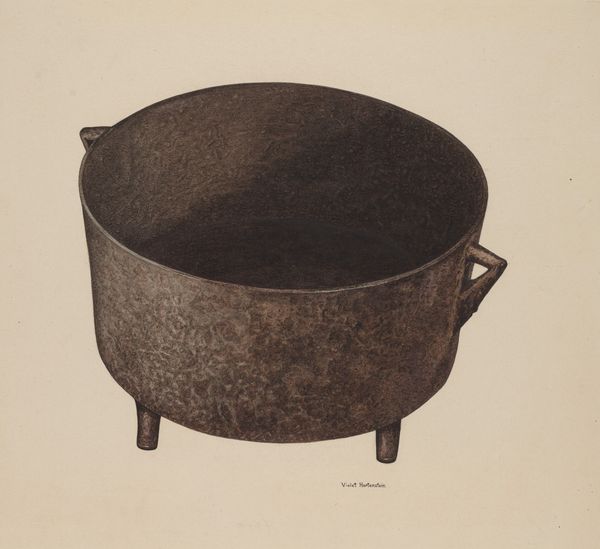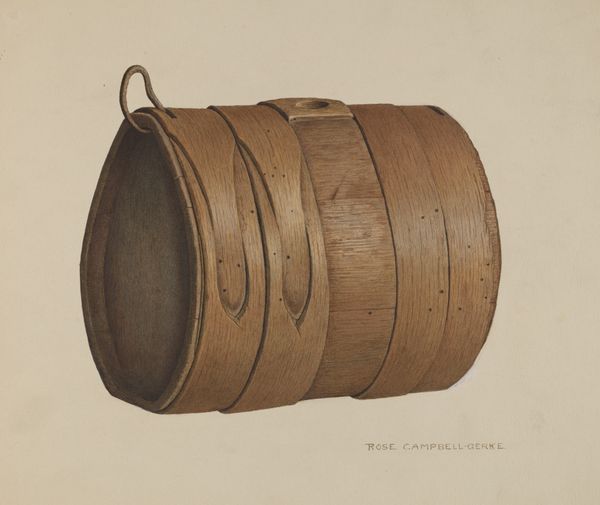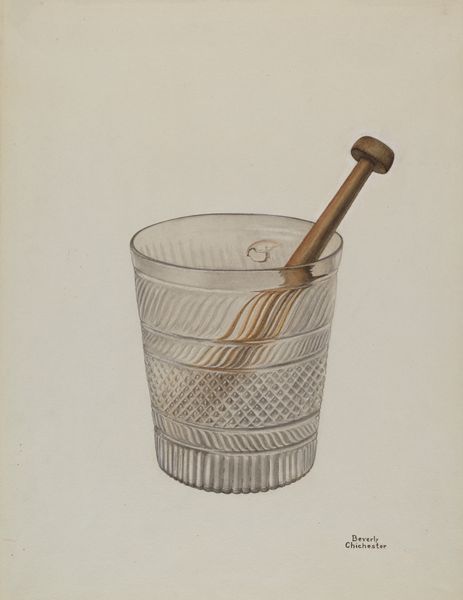
drawing, watercolor
#
drawing
#
caricature
#
watercolor
#
pencil drawing
#
realism
Dimensions: overall: 45.9 x 35.6 cm (18 1/16 x 14 in.) Original IAD Object: 10" high; 9" wide
Copyright: National Gallery of Art: CC0 1.0
Curator: Sarkis Erganian created this watercolor and pencil drawing, titled "Brazier," around 1939. Editor: Immediately, I'm struck by the texture. It looks like something unearthed, bearing the weight of time, rust, and perhaps countless stories held in that iron. Curator: The artist’s dedication to realistic representation underscores a period when material realities—like accessible heating sources—held significant social and economic importance for many households. Look closely at the manufacturing details: "Bridges Bros. No 3." This suggests a specific maker, connecting it to a broader network of industry and domestic consumption during that era. Editor: That stamped branding is fascinating; it’s an explicit inclusion of cultural markers and symbolism right there on the object’s body! It seems this drawing transcends simply representing an object. It captures a familiar presence from domestic settings; in my mind’s eye, I see people huddling around a brazier on a chilly evening. The small details like the holes and rust feel very communicative and bring forward a sense of familiarity and usage. Curator: Absolutely. The medium itself is telling. The watercolor captures the oxidation and the patina, documenting the impact of everyday usage on the metalwork. A pencil drawing provides the basis for outlines, conveying the overall design before a process of aging even happens. These choices indicate attention toward documenting the life cycle of domestic objects, something beyond aesthetics. Editor: For me, the dark openings, surrounded by circular forms within the top ring, feel somewhat like staring into vacant eyes. Given this piece was created around 1939, as you mentioned, this makes me consider the societal anxieties percolating with the approach of World War II and the impact it has on the work. Even the colors feel somber, with rusty browns and drab shades that feel nostalgic and maybe even a bit unnerving. Curator: That’s a great point about context. It’s not just an anonymous utilitarian object. It carries traces of labor, production methods, economic realities and perhaps also reflects on broader sentiments tied to that specific time. The interplay of utility and representation is central to understanding Erganian's intention. Editor: Indeed! Looking at it this way adds profound dimensions that tie object and imagery to complex aspects of social history. Curator: Right, by engaging with materials and modes of production. It enriches the understanding we can glean from a "simple" domestic object portrayed through watercolor and pencil strokes. Editor: Definitely; the cultural connotations and symbolism give depth and unlock historical, almost ancestral memories tied with basic domestic life!
Comments
No comments
Be the first to comment and join the conversation on the ultimate creative platform.

